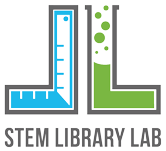Many of the teachers we work with voice that they are struggling to make science hands-on and inquiry-based while remote or hybrid teaching. Absenteeism, the physical challenges of recording hybrid lessons, curriculums designed to be delivered over Zoom, and a slew of other obstacles plague teachers who want to keep students excited about science content.
But I have this vision for virtual science classrooms. It’s a controversial one, in which content is deemphasized, and inquiry prioritized. I was a physics teacher, so I’ll give you a physics example, but it can work for any subject or topic.
Day 1: You want to teach acceleration, so you set up your laptop in the kitchen, and prop up one side of your kitchen table to create a ramp. You hold a marble or a ball at the top of the ramp, and ask students to predict what will happen to the ball as it rolls down. They tell you it will get faster, and you ask them to prove it.
From the comfort of their own homes, they need to set up their own ramp, use a timer, and prove that the ball gets faster. (you can invite them to pick up a wedge, stopwatch and marble from you, or just use a cell phone and any materials they find around their house) Tomorrow you’ll meet back and share your strategies.
Day 2: Tomorrow comes, and they share out. Some students are crushing it, some have struggled, but just about everyone has an opinion. After discussion, you invite them to try again. Put a piece of tape at the half way point of the ramp, and time how long it takes the ball to roll the first half vs the second half. Come back tomorrow with answers, and an explanation of why that means it has gotten faster. Maybe add in rulers to get feet or centimeters.
Day 3+: Another day passes, and more discussion ensues. Now you bust out the Vernier Dynamics System, and show them the motion sensor cart that tracks position vs time. You roll the cart down a ramp, and the computer collects a nice data table. The data sends electronically to the class; you ask them to graph it, and use it to prove the cart got faster. You pull up the graph generated by the computer, and compare it to the ones they’ve created. Now students are hooked, and ready to engage. They’ve got a ton of new questions, and they’re eager to find out the answers to those questions.
If you’re not sure about virtual demos, see this video tutorial on leading asynchronous virtual inquiry demonstrations.
See, I’ve got this vision for virtual science classrooms. It involves teachers guiding student in using household materials to explore a concept, then returning to the computer for discussion and extrapolation. At home, their work may be qualitative, or quantitative, but either way it serves to engage and give them a foothold into the topic that you’ll deeper dive into together. Working remotely can actually open up some new avenues that were impossible within the confines of a classroom. In a classroom, you’d have 50 minutes to set up, practice, and clean up. And if a student is absent, they’d have to come in at lunch, or get notes from a friend. This way, if they need 20 minutes or 120, no problem; if they’re frustrated and want to come back to it later, no problem. If they’re crushing it, give them ways to grow their work- try different objects or different ramp angles. If they have questions during the discussion, they can private message you and you can come back to it later, with their anonymity intact.
I am excited by the possibilities, and I’m curious to see science education evolve as a result of virtual school. But I have one problem, which is that I can’t sell teachers on it. Like I discussed in The Problem of One More Thing, teachers are overworked already, and now I’m asking them to do more work??? Well, yes and no. Yes, but I believe that once implemented, we’ll begin to see more engagement and enthusiasm, and teachers will spend less time planning scripted lessons and more time threshing through student identified misconceptions and following their leads to new understanding.
So in addition to simply my random musings, this blog is actually a call to action. STEM Library Lab is stuffed to the brim with the household consumables to implement homebased explorations, and also the tech enabled tools or expensive demonstration pieces to ensure that those explorations culminate in robust, engaging lessons. It’s here ready for you, and we’d love to help you plan your next inquiry-based virtual unit for after Winter Break. Just give us a call.

